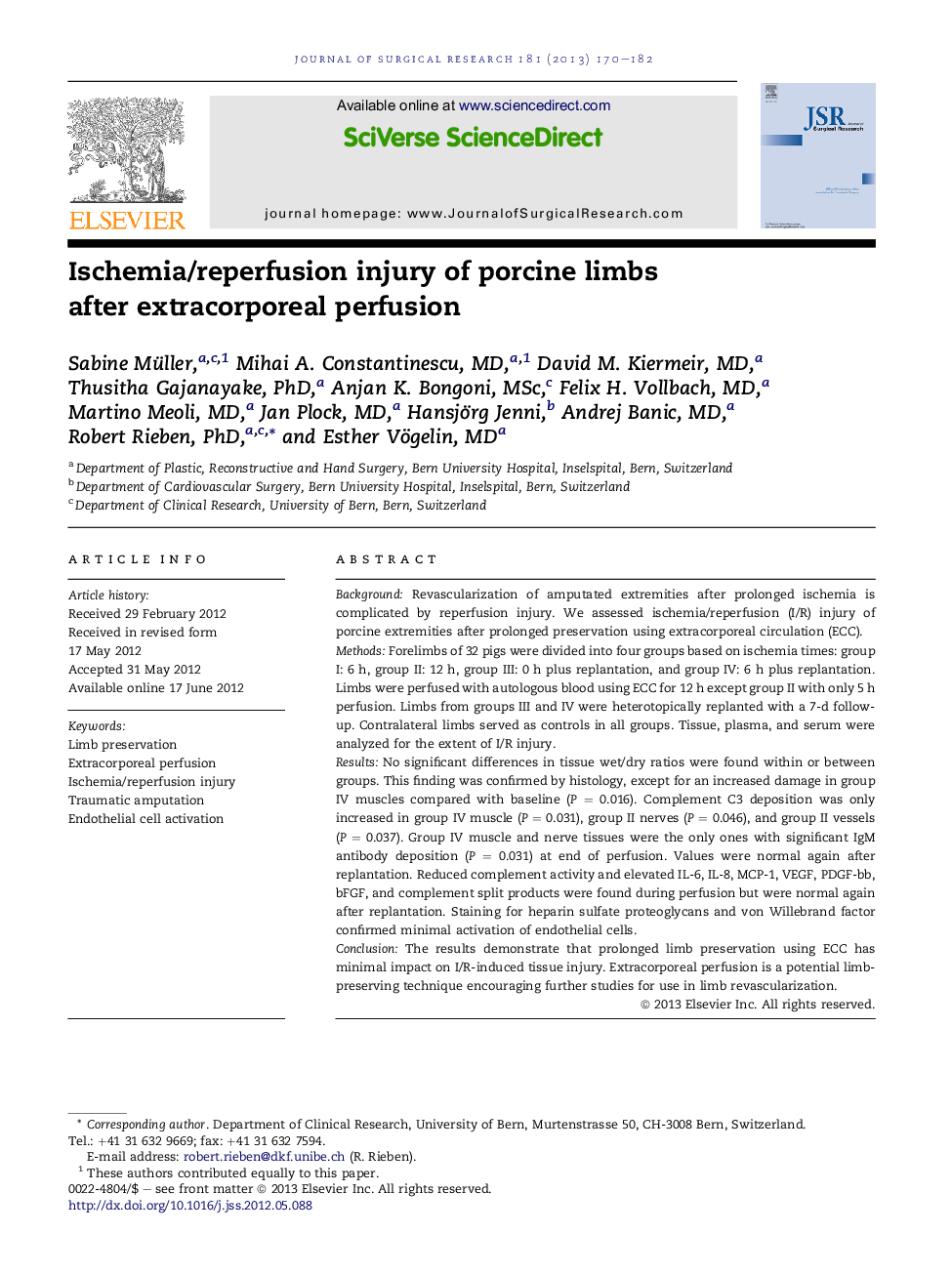| Article ID | Journal | Published Year | Pages | File Type |
|---|---|---|---|---|
| 6254022 | Journal of Surgical Research | 2013 | 13 Pages |
BackgroundRevascularization of amputated extremities after prolonged ischemia is complicated by reperfusion injury. We assessed ischemia/reperfusion (I/R) injury of porcine extremities after prolonged preservation using extracorporeal circulation (ECC).MethodsForelimbs of 32 pigs were divided into four groups based on ischemia times: group I: 6 h, group II: 12 h, group III: 0 h plus replantation, and group IV: 6 h plus replantation. Limbs were perfused with autologous blood using ECC for 12 h except group II with only 5 h perfusion. Limbs from groups III and IV were heterotopically replanted with a 7-d follow-up. Contralateral limbs served as controls in all groups. Tissue, plasma, and serum were analyzed for the extent of I/R injury.ResultsNo significant differences in tissue wet/dry ratios were found within or between groups. This finding was confirmed by histology, except for an increased damage in group IV muscles compared with baseline (P = 0.016). Complement C3 deposition was only increased in group IV muscle (P = 0.031), group II nerves (P = 0.046), and group II vessels (PÂ =Â 0.037). Group IV muscle and nerve tissues were the only ones with significant IgM antibody deposition (P = 0.031) at end of perfusion. Values were normal again after replantation. Reduced complement activity and elevated IL-6, IL-8, MCP-1, VEGF, PDGF-bb, bFGF, and complement split products were found during perfusion but were normal again after replantation. Staining for heparin sulfate proteoglycans and von Willebrand factor confirmed minimal activation of endothelial cells.ConclusionThe results demonstrate that prolonged limb preservation using ECC has minimal impact on I/R-induced tissue injury. Extracorporeal perfusion is a potential limb-preserving technique encouraging further studies for use in limb revascularization.
